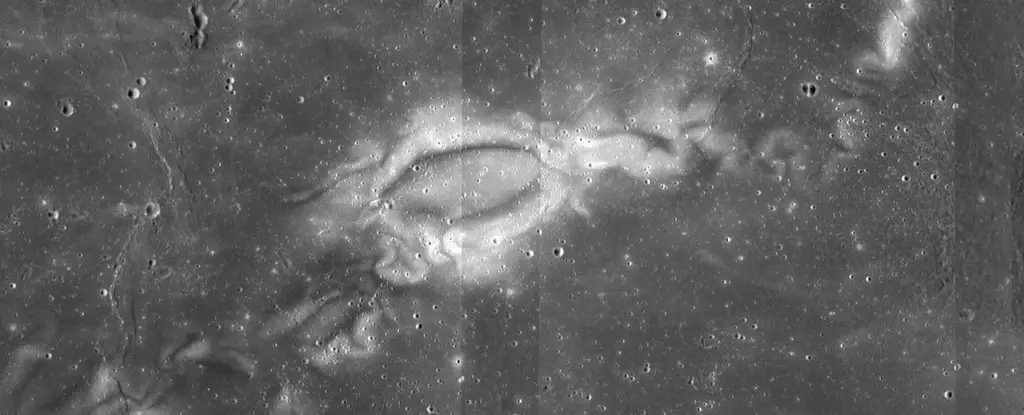The moon, our constant companion in the night sky, holds many mysteries. Among these mysteries are the enigmatic lunar swirls – bright patches on the lunar surface that have puzzled scientists for centuries. These swirls, such as the well-known Reiner Gamma swirl, have defied explanation since their discovery in the 1600s. Despite advances in technology and our understanding of the universe, the origins of these light-colored regions remain shrouded in mystery.
One of the prevailing theories regarding lunar swirls involves the presence of local magnetic fields on the moon. Unlike Earth, the moon does not have a global magnetic field to shield it from the solar wind. When solar winds interact with the lunar surface, they cause chemical reactions that darken the rock over time. However, some areas on the moon seem to be protected by mini magnetic fields. Scientists have observed that every light-shaded lunar swirl coincides with one of these magnetic fields.
Recent studies have challenged the existing hypothesis that micrometeorite impacts create these magnetic fields. Researchers from Stanford University and Washington University in St. Louis propose a new theory that suggests forces from beneath the moon’s crust may also play a significant role. These forces, such as underground cooling lavas in magnetic fields, could be responsible for creating the magnetic anomalies associated with lunar swirls.
The Role of Ilmenite
One key mineral that may hold the answer to the mystery of lunar swirls is ilmenite, a titanium-iron oxide mineral abundant on the moon. Scientists have found evidence that slow cooling of ilmenite could stimulate metallic iron and iron-nickel alloys within the moon’s crust and upper mantle, creating powerful magnetic fields. This process could explain the strong magnetic regions associated with lunar swirls.
While much of our current understanding of the moon’s magnetic fields comes from orbiting spacecraft, there is still much to learn. To truly unravel the mysteries of lunar swirls, scientists need to directly study the lunar surface. NASA’s upcoming Lunar Vertex mission, scheduled for 2025, aims to send a rover to the Reiner Gamma swirl to gather more data. By drilling down into the lunar surface, researchers hope to finally solve the puzzle of lunar swirls and gain a deeper understanding of the moon’s magnetic anomalies.
The study of lunar swirls presents a fascinating challenge for scientists. By examining the role of magnetic fields, ilmenite, and underground forces, researchers are making strides towards unlocking the secrets of these enigmatic lunar features. With continued exploration and innovative research, we may soon uncover the truth behind the bright patches that adorn the face of our nearest celestial neighbor.


Leave a Reply